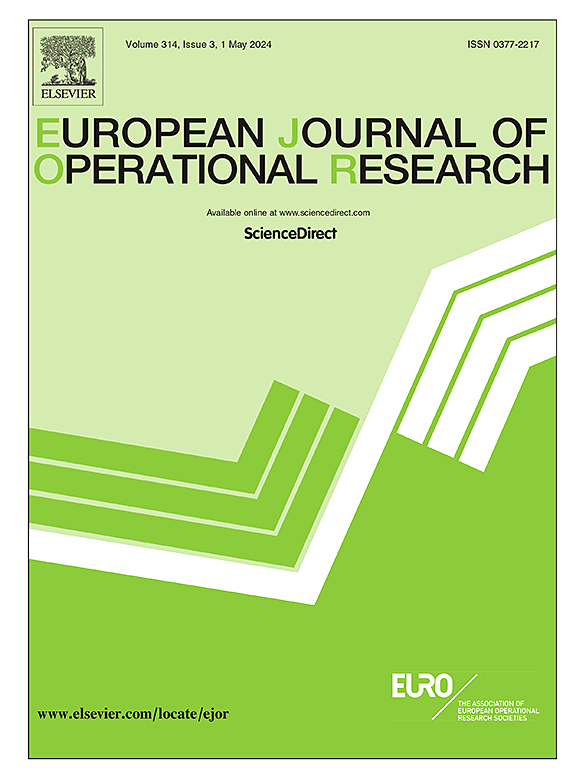Staggered routing in autonomous mobility-on-demand systems
IF 6
2区 管理学
Q1 OPERATIONS RESEARCH & MANAGEMENT SCIENCE
引用次数: 0
Abstract
In autonomous mobility-on-demand systems, effectively managing vehicle flows to mitigate induced congestion and ensure efficient operations is imperative for system performance and positive customer experience. Against this background, we study the potential of staggered routing, i.e., purposely delaying trip departures from a system perspective, in order to reduce congestion and ensure efficient operations while still meeting customer time windows. We formalize the underlying planning problem and show how to efficiently model it as a mixed integer linear program. Moreover, we present a matheuristic that allows us to efficiently solve large-scale real-world instances both in an offline full-information setting and its online rolling horizon counterpart. We conduct a numerical study for Manhattan, New York City, focusing on low- and highly-congested scenarios. Our results show that in low-congestion scenarios, staggering trip departures allows mitigating, on average,自动移动按需系统中的交错路由
在自动按需移动系统中,有效管理车辆流量以减轻引起的拥堵,并确保高效运行,对于系统性能和积极的客户体验至关重要。在此背景下,我们研究了交错路由的潜力,即从系统的角度故意延迟行程出发,以减少拥堵,确保高效运营,同时仍然满足客户的时间窗口。我们形式化了潜在的规划问题,并展示了如何有效地将其建模为一个混合整数线性规划。此外,我们提出了一种数学方法,使我们能够有效地解决离线全信息设置和在线滚动地平线对应的大规模现实世界实例。我们对纽约市曼哈顿进行了一项数值研究,重点关注低拥堵和高拥堵的情况。我们的研究结果表明,在低拥堵情况下,在完全信息设置下,错开的出行出发平均可以缓解98%的诱导拥堵。在滚动地平线设置中,我们的算法允许我们减少82%的诱导拥塞。在高拥塞情况下,我们观察到完整信息绑定的平均减少了60%,在线设置的平均减少了30%。令人惊讶的是,我们表明,在低拥堵和高拥堵的情况下,这些减少可以通过将出行出发时间最多改变6分钟来实现。
本文章由计算机程序翻译,如有差异,请以英文原文为准。
求助全文
约1分钟内获得全文
求助全文
来源期刊

European Journal of Operational Research
管理科学-运筹学与管理科学
CiteScore
11.90
自引率
9.40%
发文量
786
审稿时长
8.2 months
期刊介绍:
The European Journal of Operational Research (EJOR) publishes high quality, original papers that contribute to the methodology of operational research (OR) and to the practice of decision making.
 求助内容:
求助内容: 应助结果提醒方式:
应助结果提醒方式:


